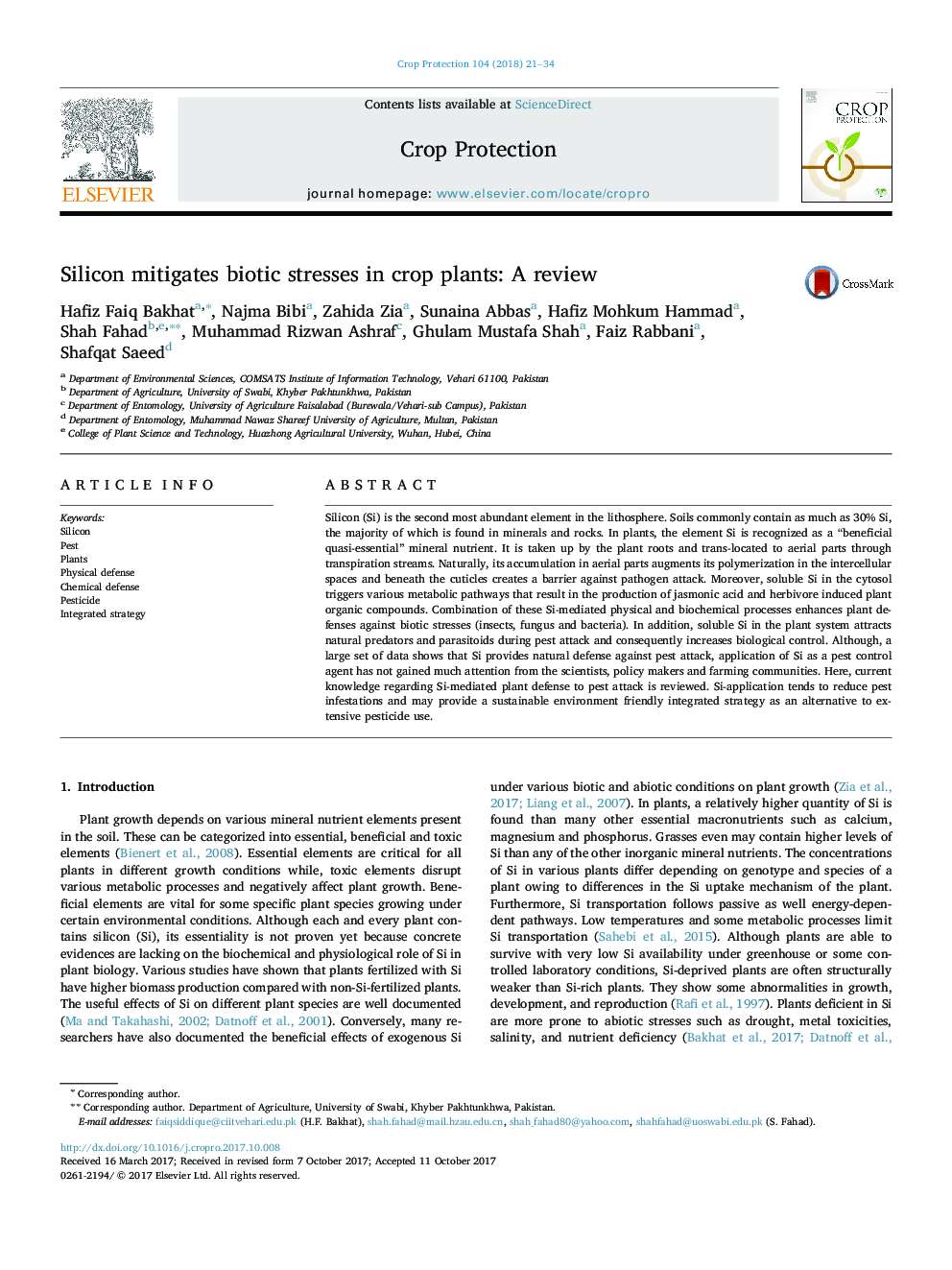| Article ID | Journal | Published Year | Pages | File Type |
|---|---|---|---|---|
| 5760778 | Crop Protection | 2018 | 14 Pages |
Abstract
Silicon (Si) is the second most abundant element in the lithosphere. Soils commonly contain as much as 30% Si, the majority of which is found in minerals and rocks. In plants, the element Si is recognized as a “beneficial quasi-essential” mineral nutrient. It is taken up by the plant roots and trans-located to aerial parts through transpiration streams. Naturally, its accumulation in aerial parts augments its polymerization in the intercellular spaces and beneath the cuticles creates a barrier against pathogen attack. Moreover, soluble Si in the cytosol triggers various metabolic pathways that result in the production of jasmonic acid and herbivore induced plant organic compounds. Combination of these Si-mediated physical and biochemical processes enhances plant defenses against biotic stresses (insects, fungus and bacteria). In addition, soluble Si in the plant system attracts natural predators and parasitoids during pest attack and consequently increases biological control. Although, a large set of data shows that Si provides natural defense against pest attack, application of Si as a pest control agent has not gained much attention from the scientists, policy makers and farming communities. Here, current knowledge regarding Si-mediated plant defense to pest attack is reviewed. Si-application tends to reduce pest infestations and may provide a sustainable environment friendly integrated strategy as an alternative to extensive pesticide use.
Related Topics
Life Sciences
Agricultural and Biological Sciences
Agronomy and Crop Science
Authors
Hafiz Faiq Bakhat, Najma Bibi, Zahida Zia, Sunaina Abbas, Hafiz Mohkum Hammad, Shah Fahad, Muhammad Rizwan Ashraf, Ghulam Mustafa Shah, Faiz Rabbani, Shafqat Saeed,
